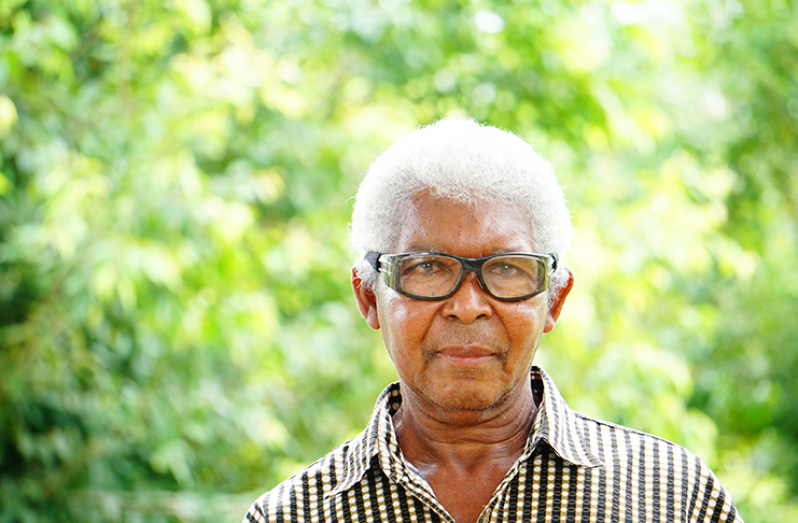– Elderly resident reminisce on community life
ASHTON Woolford would not trade his life in Kumaka if he had to re-live his younger years. At the age of 68, he is at peace with his decision and is elated with the tranquillity and comfort of the village—though as many others, he also feels dwindling resources and lack of infrastructure are hindrances.
Now an elder in the community, with grown children and grandchildren, Woolford is one of its storytellers.
He recalled that as a boy he used to attend the Congregational School, which was on a hill at Caria Caria Village. He has fond memories of his time there, but things did change.
“The old Congregational Church which was the school rotted away. It was a landmark and they had a big old silk cotton tree next to it,” he said.
After officially completing school, he enrolled in the army. He spent seven years as a soldier before he returned home; soon he married a young woman from Hogg Island.
Woolford settled in Kumaka village and his family grew.
In all, Woolford had five children, during which time he worked on the farm and supplemented it with other activities.
“Back in the days the residents depended heavily on the logging business to earn, but these days accessing the trees have become difficult without the use of heavy equipment and the locals cannot afford it.”
CHANGING TIMES

Woolford stated that over time, the trees began disappearing and folks had to venture further into the wilderness, but it was difficult, so they started to depend on fishing and farming to make a living.
“Life is simple here regardless of the challenges of living this far out and being remote we don’t have access to certain basic necessities but we try to survive despite it all,” he said.
Woolford added that with jobs being scarce, the youths have become idle and they are finding unsavoury hobbies to occupy their time, which has become quite worrisome.
“We had two young men gone completely out of their minds due to the abuse of illicit drugs and we don’t know where they are sourcing it, but it is brought here,” he said.
The elder reported that there is dire need for a recreational facility for the youths to be able to do something meaningful with their time such as skills training after which they can become self-employed.
At best, youngsters would get together and play sports, but idleness creeps in. Without jobs, some people in the community venue out. At times, many young men would look for work in the hinterland, which means months away from home. There, Woolford noted that some would get malaria and would have to return home for medical attention and to recuperate.
Woolford disclosed that via speedboat, it is about seven miles to Parika, East Bank Essequibo from Kumaka Village, Essequibo River and it would take several gallons of gas depending on the outboard engine.
He added that there is a timber operation at Buck Hall and it is a transhipment point for fuel and often the river becomes polluted and the fishermen suffer.
The villager said that certain basic needs would help the community to thrive.



.jpg)








